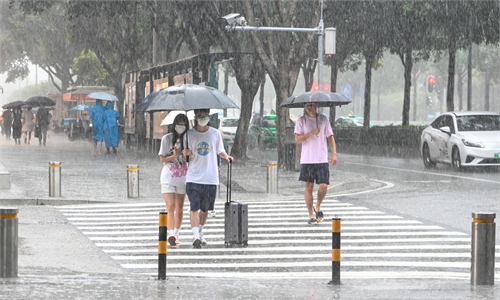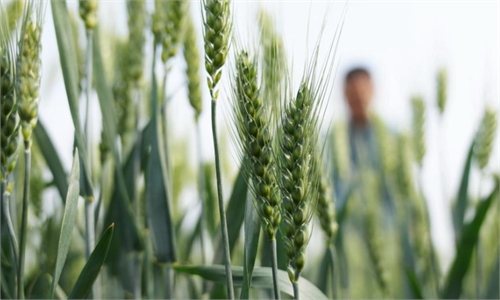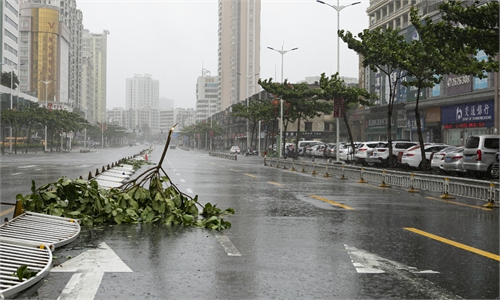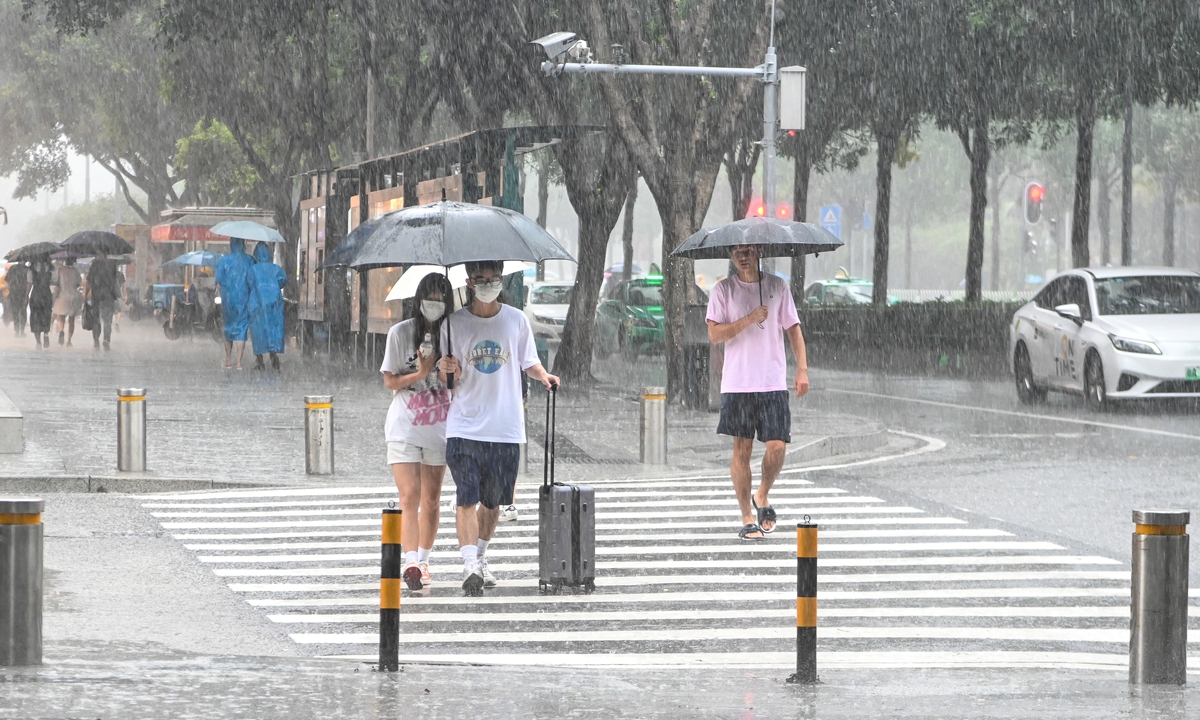
Residents walk on streets in Guangzhou, South China's Guangdong Province in heavy rain on July 3, 2022, after typhoon Chaba made landfall in Guangdong. Chaba is the first typhoon to make landfall in China in 2022. Photo: cnsphoto
Typhoon Chaba, the Thai name for the hibiscus flower, is heading northward into China's inland regions after making landfall around the coastal area of Maoming, South China's Guangdong Province, on Saturday afternoon.
Videos posted by local media outlets show howling winds, water rushing through the streets, broken power lines, falling windows and people paddling to safety in affected cities. Many netizens took to social media platforms to send their best wishes to the people in the affected areas.
Public information indicates that Chaba is the first typhoon to make landfall in China in 2022. Before and during the arrival of the typhoon, cities in South China's Hainan, Guangxi and Guangdong evacuated and relocated a total of more than 92,000 residents, fishermen, dock workers, tourists and others, according to official data released.
Chaba is moving northward but it is expected to continue to weaken over coming days, the China Meteorological Administration (CMA) said on Sunday.
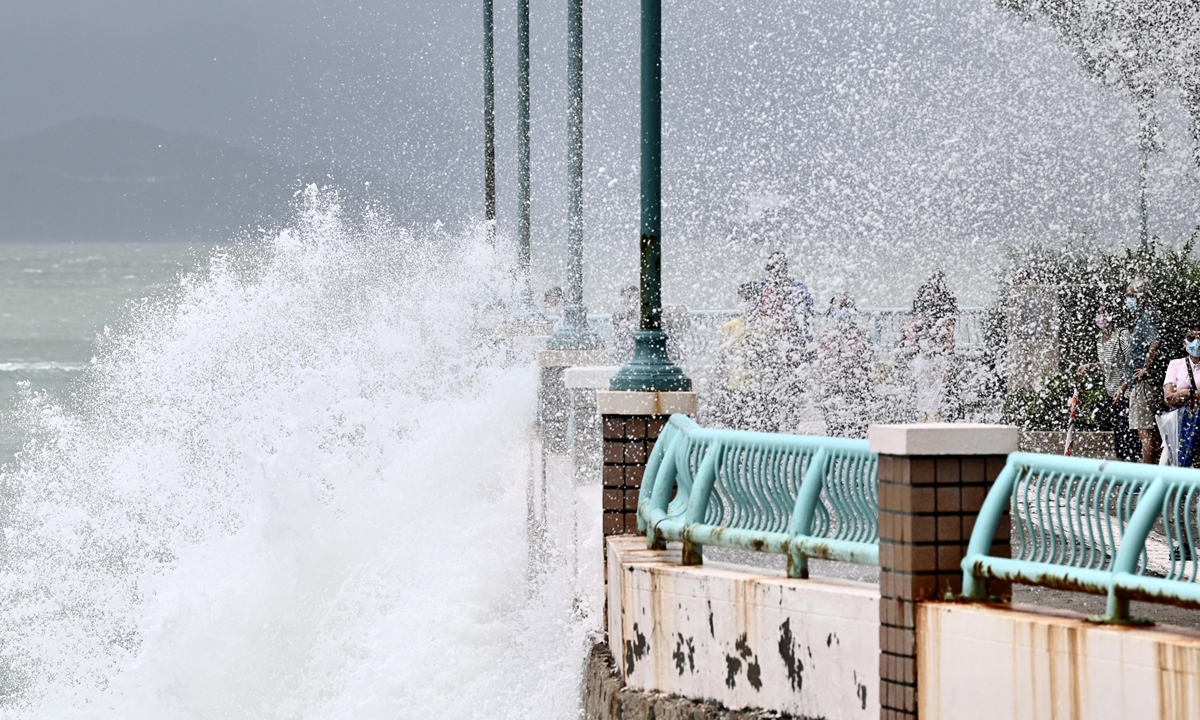
Huge waves crash on the banks of South Horizons in Hong Kong Speicial Administration Region on July 2, 2022, as the city releases Number 8 storm warning signal.
As the typhoon weakens to tropical storm level, Guangxi Zhuang Autonomous Region adjusted its emergency response level from Level II to Level IV on Sunday morning. Chaba is expected to remain in Guangxi for a considerable amount of time and will likely have a relatively large impact, according to the Guangxi meteorological station.
Typhoon Chaba formed in the South China Sea and has the distinctive features, including asymmetric structure, slow movement and long impact time, Qian Qifeng, a top forecaster from the National Meteorological Center, was quoted by Chinese newspaper Science and Technology Daily as saying.
The distribution of wind and rain under the influence of this type of typhoon tends to be asymmetrical and the path tends to be variable, making the forecast difficult. Such typhoons are easy to combine with monsoon cloud systems to cause long periods of rainfall, Qian said.
Over past days, Chaba had already caused at least three tornadoes in Guangdong.
China's State Flood Control and Drought Relief Headquarters on Saturday night upgraded its emergency response for flood and typhoon control to Level III.
Gales of magnitude 6-7 with gusts of magnitude 8-9 will remain present off the country's coastline, most of the South China Sea, the Beibu Gulf in Guangdong and Guangxi from Sunday afternoon to Monday afternoon. There will also be heavy rainfall and short-term heavy precipitation in parts of Guangdong, Guangxi and Central China's Hunan Province, according to the CMA.
Chaba is expected to enter Hunan on Monday morning at tropical depression strength, and its storm effects will also continue to move to the north, the China Meteorological Administration said.
Although there are some concerns that typhoons may affect grain production, farmers and industry insiders have expressed optimism.
"The typhoon has done little damage to local agriculture so far, and the harvest volume for summer grain reached higher level year-on-year," a farmer from Lianqiang farming and livestock cooperative agency locates in Baise, Guangxi, told the Global Times on Sunday.
He said that the occasional heavy rain and strong wind may have some impact on tropical fruits like mango, but they have built extra support structures for trees, production facilities and make sure the rain water can be drained immediately.
"Typhoon only affects grain production in partial areas in southern China and will not result in large-scale reduction in output," Jiao Shanwei, editor-in-chief of industry news website cngrain.com, told the Global Times on Sunday.
On Saturday, the Ministry of Agriculture and Rural Affairs rapidly moved to deploy measures against the typhoon, urging local government departments to minimize damage brought about the typhoon and manage post-disaster production restoration.
Apart from agriculture, anti-typhoon measures have also been taken on all fronts at sea, in air and on land, the authorities said, focusing on ensuring vessels return to ports and offshore workers come ashore while relocating people in areas prone to geological disasters.
On Sunday, 27 people aboard a vessel which was trying to resist typhoon Chaba near the city of Yangjiang in Guangdong went missing, after the crane sank in waters, according to the provincial maritime search and rescue center. Search and rescue efforts are still underway.
Due to the influence of Chaba, the new Hong Kong Palace Museum, which is due to open to the public for the first time on Saturday, did not open as scheduled.
Typhoon Aere, the fourth typhoon of the year, has entered East China Sea on Sunday morning. Affected by Aere, there are still uncertainties about Chaba's route and the intensity of rainfalls it will cause, authorities announced. They alerted residents of possible severe flood control challenges.
